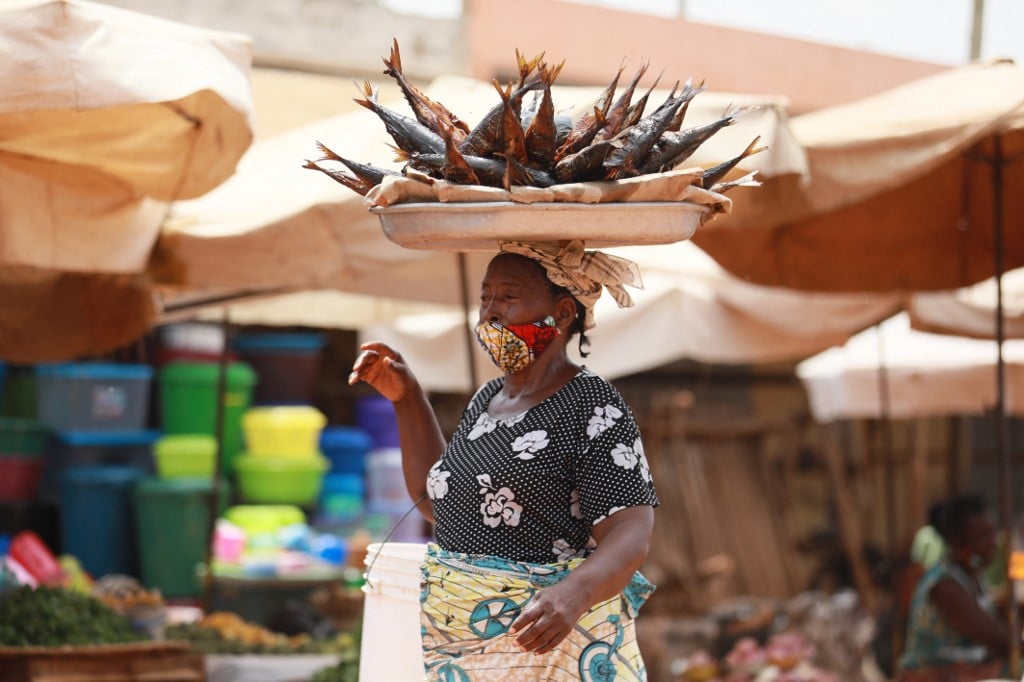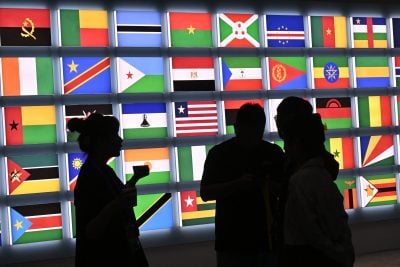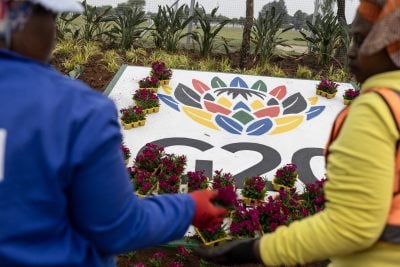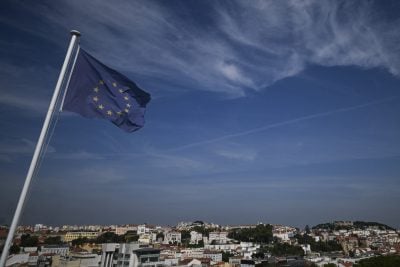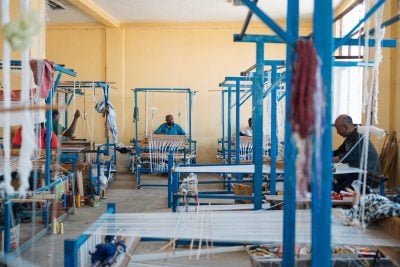When the pandemic hit in 2020, Africa entered one of the most torrid recessions in half a century, its combined GDP contracting by 2.1%.
The epic contraction was largely driven by African governments implementing strict lockdowns amid fears that Covid-19 would overrun fragile health services across the continent.
2021 was a different story. Last year, sub-Saharan Africa grew by a modest 3.7% according to the IMF, driven by a partial resumption of tourism, a rebound in commodity prices and the rollback of pandemic-induced restrictions.
However, the outlook for 2022 looks barely unchanged as the Fund predicts that sub-Saharan Africa’s growth will only increase by 0.1% to 3.8%.
Firstly, the global lender says that Africa will continue to face Covid-19 related problems, compounded by a vaccination rate that lags well behind most other regions.
In the absence of vaccines, the emergence of deadly and more transmissible new variants threatens to make Africa a global outlier on the road to recovery.
Though the Omicron variant has been found to be less deadly than past mutations, it was first discovered in South Africa and it becomes the second mutation to emerge from the country.
Scientists believe that the high presence of co-morbidities like HIV creates the perfect environment for new variants to grow, threatening the country’s rebound and the extended region in general.
Late last year, a large swathe of Southern African countries, including South Africa, were added to travel bans by a range of countries across the world in response to the emergence of Omicron.
The second threat to growth is the accelerated pace of climate change, the IMF says.
The increased incidence of extreme weather patterns ranging from wildfires to cyclones threatens to destroy crops, businesses and livelihoods across the continent.
While a tentative global agreement was forged, critics say that the recent Cop26 meeting in Glasgow made it clear to many African policymakers that the largest emitters of harmful gasses are either unable or unwilling to allocate the amount of capital needed to help developing countries combat climate change.
Widening gap warning
Faced with these two challenges – and many more – the IMF is concerned that Africa’s muted growth stands in stark contrast to the rest of the world.
“The expected recovery is slower than in other regions, leading to widening divergences,” the Fund writes in its 2022 outlook.
“Advanced economies are forecasted to return to their pre-crisis growth path by 2023. Sub-Saharan Africa, on the other hand, does not regain the lost ground any time soon. The region would have to grow twice as fast in the next three years to match the type of recovery seen in advanced economies”.
Only around 8% of Africa’s 1.4bn population are fully vaccinated, leading to predictions that the continent will not reach an acceptable threshold for several years.
The delay will continue to put pressure on African health systems while at the same time stifling a tourism rebound for popular coastal and island countries that rely on spending by foreign visitors for a sizeable share of GDP.
The divergence between Africa and the rest of the world is also mirrored on the continent where smaller, less resource-dependant markets are generally outperforming their larger counterparts.
“Even before the pandemic, non resource-intensive countries that have a diversified economic structure had been growing faster than resource-rich countries,” says the IMF.
“But this gap has been exacerbated by the pandemic, which has highlighted key disparities in resilience.
The Fund says that the top five economies to grow in Africa will be Seychelles, Rwanda, Mauritius, Niger and Benin which all look set to hit above 6% growth.
More populous nations such as Ghana, Côte d’Ivoire and Senegal also look set grow at near pre-pandemic levels.
These countries all boast diversified economies with governments that are working to attract investment, build key infrastructure and boost manufacturing and services.
The laggards are the African nations that rely mainly on resources for growth amid challenging political and security environments.
Nigeria, Angola and South Africa are all in the bottom 10 countries for GDP growth at 2.7%, 2.4% and 2.2% respectively.
Ethiopia, which has been embroiled in civil war for more than one year, comes at the bottom of the list as the 54th country.
The IMF was unable carry out an economic appraisal due to the conflict and therefore omitted to provide a prediction for Ethiopia in both 2022 and 2023.
The sluggishness of the largest economies offers a somewhat distorted view of meagre growth in Africa as they weigh on the continent’s overall average.
The laggards
Failure to push through reforms in Angola has set back growth despite hopes in 2017 that the incoming president João Lourenço would slowly wean the country away from oil.
Though Lourenço has implemented a crackdown on the figures linked to the former president, José Eduardo dos Santos, issues of corruption and mismanagement still dog the public sector.
The recent rise in oil prices by more than 70% may help fast-track Angola’s recovery, but only if the government makes a serious effort to create policies that encourage broad-based and diversified growth.
South Africa isn’t constrained by an undiversified economy but mirrors Angola in sluggish reforms and serious power issues related to the national utility Eskom.
A major bottleneck for the private sector is the cost and reliability of electricity with rolling blackouts frequently shutting down whole areas of some of South Africa’s largest and most important cities.
Africa’s most developed economy is also trying to break away from an over-reliance on fossil fuels as almost 80% of South Africa’s power is derived from coal. A pivotal deal was announced at Cop26 under which the US, UK and European nations would help the country to pay for the transition away from coal. That is likely to spur a renewables revolution, but progress is unlikely to be immediate.
Other headwinds include record levels of unemployment and medium-term pressure on government expenditure as public sector finances are strained by social relief grants.
Another issue is the ongoing battle between different factions of the African National Congress (ANC) over the direction of the party.
While President Cyril Ramaphosa might like to push through business-minded reforms he is opposed by a faction of the ruling party linked to former president Jacob Zuma that takes a more left-wing and statist stance.
Nigeria rising
Although Nigeria is set for subdued growth in 2022, Andrew Nevin, West Africa financial services leader and chief economist at PWC Nigeria, says there are several causes for optimism.
“There has been a major shift in economic policy – the role of regional states has really come to the fore. In the last five or six years, you have seen a different tone set by the state governors. There is more pressure in the political system for parties to choose candidates who are going to do a good job so that is a major positive shift,” he says.
The government has also adopted the widespread recognition that it must work to attract private capital and it has taken meaningful steps to enable the business environment.
The cultural industries are recent areas of success including fashion, music and film.
Nevin says that they account for more of Nigeria’s GDP combined than the mammoth oil sector which looks to be on the wane as global appetite for oil investments drop and the country’s onshore oil fields are deemed high-risk by investors.
In this context, the eventual signing into law of the long-delayed oil bill in 2021 might have come “around a decade too late”.
Foreign direct investment (FDI) in 2022 is therefore expected to be pumped into sectors like agriculture, renewable energy, telecoms and FMCG rather than fossil fuels.
Something that must be taken into account, Nevin adds, is that Nigeria’s economy is much larger than figures used by economists, due to the size of the informal sector.
He expects Africa’s most populous country to rebase its statistics in 2022 or 2023, leading to an economy that is up to 20 to 25% bigger.
“We don’t use the official statistics here except to the extent we have to. The economy is much bigger than we think it is,” he says.
The number one issue, however, is the continued and growing instability in Nigeria’s Middle Belt, North East, North West and South East.
A record number of people were kidnapped across Nigeria in 2021 with armed bandits in Zamfara, Katsina and Kaduna states regularly engaging in mass kidnapping of schoolchildren.
Besides sparking a humanitarian crisis, Nevin says that the level of insecurity is also having a negative effect on the agricultural sector – a key engine of the economy.
“There is a lot of acreage that is not being planted because people will stay in their village rather than going out to plant more. As an economist, I think everyone agrees that it is the single biggest constraint on the economy at the moment,” he says.
East Africa scarred
The East African region outperformed much of the rest of Africa during the pandemic as its economies are generally more diversified and it boasts one of the highest levels of intra-regional trade.
However, moving to 2022, experts say the region may begin to lag as its two biggest economies – Kenya and Ethiopia – experience a slowdown related to governance issues.
Kenya is set for tightly contested 2022 elections as president Uhuru Kenyatta comes to the end of his second term.
Deputy president William Ruto, who has fallen out of favour with his own party, is expected to lead the opposition as an anti-establishment and populist candidate.
Drawing cross-tribal support from Kenya’s main ethnic groups, experts believe that the election may cause large-scale disruption if Ruto is blocked from fairly contesting the election.
With Ethiopia already mired in conflict, this would have a knock-on effect across the rest of the region as intra-regional trade and cooperation is disrupted.
“If some of the big economic drivers in the region struggle then you will see lower growth across the region,” says Acha Leke, senior partner and chairman, McKinsey & Company, Africa.
“My sense is that in East Africa it will struggle because of the crisis in Ethiopia and the elections in Kenya”.
Debt outlook stable
The outlook for sovereign debt levels across Africa in 2022 is neutral, according to Fitch Ratings.
Zambia was the the first African country to default on debt repayments in 2020, sparking fears that there would be a wave of Covid-19 defaults across the continent.
While debt levels have risen in many countries, a proactive response from development finance institutions (DFIs) and multilateral lenders has meant that many African countries have been able to support their economies without taking on too much additional private debt.
In August 2021, the IMF announced the release of $650bn in special drawing rights (SDRs), of which $33bn were allocated to Africa. The SDR is an international reserve asset that can be used to supplement member countries’ official reserves and reduce their dependence on more expensive domestic or external debt.
However, because SDRs are allocated on the basis of quotas broadly in line with the size of a country’s economy, South Africa and Nigeria received more of the SDR allocation than 23 of Africa’s lowest-income countries put together and only 40% of the total allocation will go to emerging markets.
The US, for example, was allocated $113bn (17%) of the total disbursements, even though it can print dollars to boost liquidity if it chooses to do so. That said, G7 countries have pledged to rechannel at least $100bn of their SDRs to developing regions.
Benin, Côte d’Ivoire, Gabon and Seychelles have recently been upgraded showing that the pandemic was less severe than expected in some countries, though 19 sub-Saharan African sovereigns still have a negative outlook.
Kenya, Rwanda, and Uganda retain a negative outlook amid concerns around governments’ ability to halt the upward debt trend in a region that has borrowed heavily to fund large infrastructure projects.
In West Africa, growth in Benin and Côte d’Ivoire will remain strong and pre-pandemic consolidation has meant debt levels are well below the regional median.
However, Ghana faces a particularly high interest burden and the recent sharp rise in Eurobond yields complicates re-financing and raises pressure to seek an IMF programme.
Nigeria looks also set to borrow another $2.1bn on the international market, raising concerns over fiscal sustainability.
“The level of debt burden in West Africa has been on the rise, as of half-year 2021, the total public debt stock in West Africa stood at a staggering $164.1bn. This is according to data obtained from Statista, a leading German market, and consumer data provider,” says Toyin F Sanni, CEO of Emerging Africa Capital Group.
“Nigeria, Ghana, and Ivory Coast registered the highest public debts in the region, with $79.5bn, $21.9bn, and $19.5bn, respectively”.
There is also concern over the demand for African debt in the context of the global economy.
In the recent past, low interest rates in developed markets had pushed investors to borrow cheap at home and invest in emerging markets where interest rates were higher.
The yield on a 10-year US treasury bond was 0.5% whereas investors could collect around 8% on a Nigerian 10-year bond, 9% on a South African 10-year bond, and 12% on a Kenyan 10-year bond.
However, if interest rates rise in developed markets the demand for riskier assets may begin to tail off.
There have been fears there could be a repeat of the 2013 “taper tantrum”, when the chairman of the US Federal Reserve remarked that the Fed might soon start to slow down its purchasing of government securities under quantitative easing, provoking a crash in bond prices, a hike in interest rates and a massive sell-off of equities.
The announcement sent investors fleeing from emerging markets where currencies dropped by an average of 13.5%.
“As always if there is tapering in developed markets and a rise in interest rates, African issuers will be affected both in terms of cost to access the market but potentially also in having access,” says Miguel Azevedo, head of investment banking for Middle East and Africa at Citi.
“My recommendation to African issuers is to come to the market as soon as they can and fund their investment plans in the first half of the year”.
FDI forecasts flag
FDI in Africa fell by 16% in 2020 to $40bn, from $47bn in 2019 – with commodity-dependant countries more seriously impacted than non-resource based countries.
Mirroring Africa’s rebound from one of the worst recessions in more than half a century last year, FDI is expected to have improved in 2021 but only to a limited extent.
The investment outlook in 2022 remains muted with a possible downtrend due to rising inflation and a slowdown in the global economy.
Leke at McKinsey & Company says there are several external risks that could affect FDI into Africa this year.
“A big slowdown in the global economy, a financial crisis or continued Covid-19 disruptions will affect investment flows into Africa,” he says.
Bright spots may include investments in tech and digital infrastructure – two sectors which boomed during the pandemic as investors saw opportunities in business models that solved pandemic-related problems.
In fact, investment in African tech has grown at a rapid pace year-on-year rising from a record $2.4bn in 2020 to $4.9bn in 2021, according to data collected by Briter Bridges.
Fintech was the undisputed winner for African tech in 2021 with several companies closing rounds that pushed their valuations above the $1bn mark.
This venture capital (VC) backed trend is expected to continue in 2022 with tech companies from other sectors including agriculture, health and education reaching the unicorn status.
Finally, Covid-19 has changed the way investors and borrowers think about funding in Africa and throughout the rest of the world.
Analysts say that non-bank private lending, otherwise known as private debt, will be a growing asset class in Africa as traditional banks struggle to offer loans and SMEs look for more innovative forms of finance.
Want to continue reading? Subscribe today.
You've read all your free articles for this month! Subscribe now to enjoy full access to our content.
Digital Monthly
£8.00 / month
Receive full unlimited access to our articles, opinions, podcasts and more.
Digital Yearly
£70.00 / year
Our best value offer - save £26 and gain access to all of our digital content for an entire year!
 Sign in with Google
Sign in with Google 